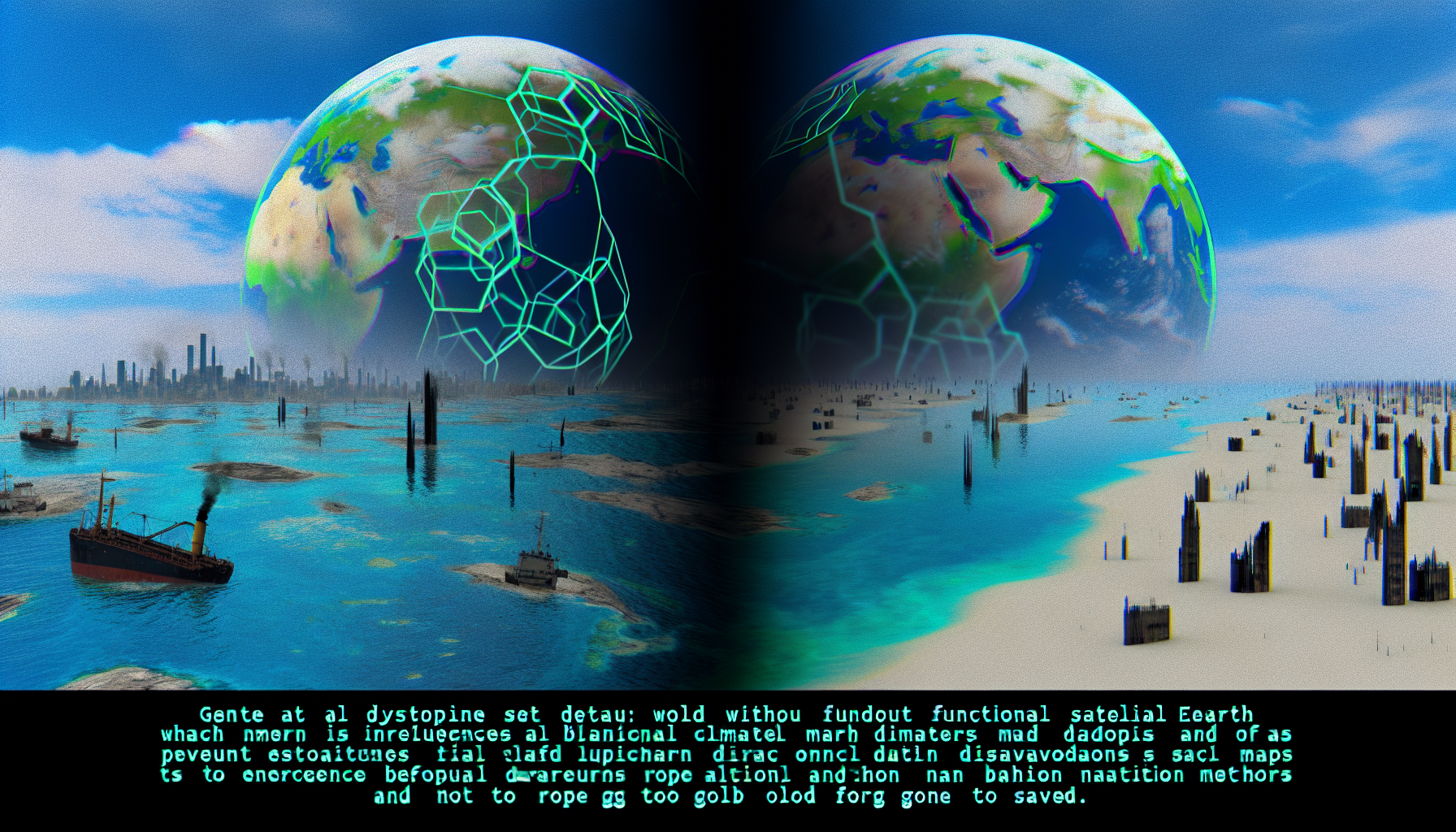The world as we once knew it, brimming with digital maps at our fingertips, is no more. We embarked on a journey, an eerie voyage into the new realms of the unknown, like ancient sailors with no compass. Our guiding celestial eyes, satellites that once gazed upon Earth’s every contour, have ceased to function. The absence of these orbiting cartographers has left our maps blank, our geolocation unreliable, and has plunged our world into a metaphorical dark age.
Imagine waking up one day to find your digital maps barren, the blue dot denoting ‘You Are Here’ wandering aimlessly like a ghost ship. As shocking as it seems, this scenario isn’t ripped from science fiction – it is a glimpse into a possible future where environmental chaos and technological failures have conspired against us.
Once, these artificial stars paved the way for travel, commerce, and even simple daily errands. They have now fallen prey to the dystopian catastrophe we have been weaving through climate neglect. This isn’t just about losing the luxury of real-time directions to the newest organic eatery or a friend’s apartment. It means a colossal disruption to global supply chains, emergency services, and even national security.
The roots of this catastrophe lie in our past actions: ignored warnings, belched emissions into the sky, and oceans swelling with human disregard. The resulting environmental upheavals have been punishing. Intense solar flares, aggravated by our weakened magnetic fields and ailing atmosphere, have made mincemeat out of delicate onboard electronics. This celestial onslaught is abetted by a graveyard of space debris, making launches and satellite maintenance akin to navigating a minefield.
Without the ‘eye in the sky’, our dependency on the tech proves to be our Achilles heel. The story is no longer about the wonders of human innovation but how our creations fade away before a relentless, chaotic nature. Farmers can’t precision sow their crops leading to famine, drone deliveries become a relic of a whimsical past, and the triumph of online maps over paper ones feels like a hollow victory.
Some say crisis breeds creativity. Yet, in this reality, our GPS-dependence appears to have withered our instincts. We have become Icaruses whose wings melted in the unforgiving sun, a society brought to its knees not by hubris, but by a brutal reminder of nature’s sovereignty. On ground level, the chaos unfolds – civil unrest surges as supplies dwindle and once-connected communities become isolated enclaves.
In the ruins of this modern-day Babel, visionaries and heretics alike are voicing alternatives. Amateur radio operators have become the new-age town criers, harking back to older navigation methods, like star charting and sextants, have seen a renaissance. Graffiti coded maps emerge, painted by nocturnal cartographers as a means to re-chart the world. Where satellites have left a void, humanity’s resilience sprouts – but the question remains, is it too little, too late?
All these developments conjure a mix of anarchy and penitence. They shape a society left scrambling for a semblance of the order that once was. ‘Journey into the Blank Maps’ isn’t merely a tale of satellites gone silent. It’s a parable about our severed connection with the planet and an introspective query on what we deem essential for survival in this haunting symphony of disrepair.
Void of satellite guidance, we are left with an open-ended narrative, one where our choices today still shape the morrows of an uncertain world. As we adapt to navigate these blank maps, we redefine our relationship with technology and the Earth, or we succumb to the silence from above. This is the story we are all part of – the story of adaptation, resistance, and the indomitable human spirit, undeterred even as the monitors flatline and the satellites fall silent.
